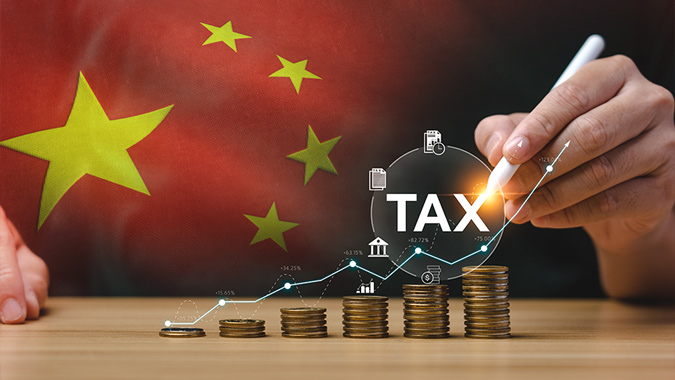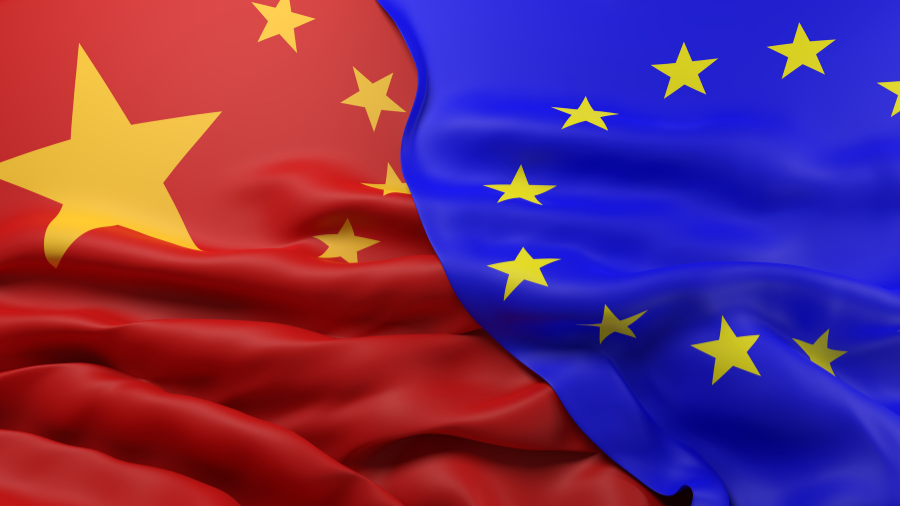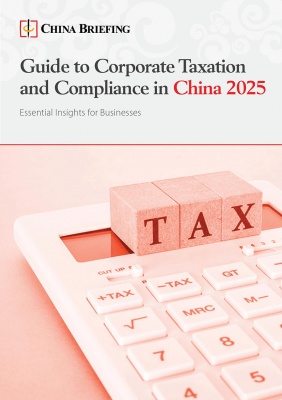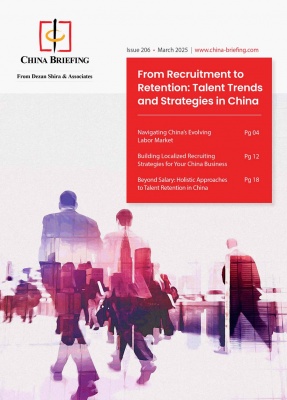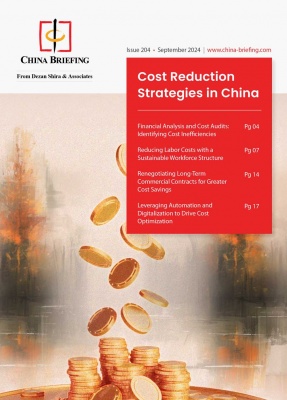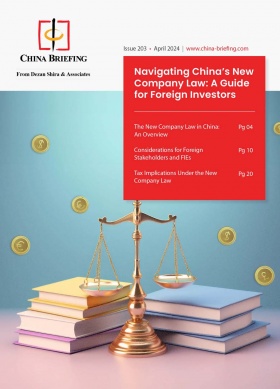China-Vietnam Relations: Trade Dynamics and Investment Outlook
While China plays an irreplaceable role in the global supply chain, Vietnam has rapidly emerged as a key investment destination in Asia. It’s crucial to understand both the competition and potential collaborative opportunities between the two nations.
China and Vietnam have enjoyed a strong bilateral relationship since 1950, built on a long-standing friendship and historical support from China. In 2013, the two nations declared a “comprehensive strategic partnership,” which has led to growing cooperation in various fields, particularly trade and investment. This relationship was further strengthened during a presidential-level meeting in August 2024, where both countries focused on enhancing economic collaboration, with particular emphasis on improving cross-border trade infrastructure and expanding investment opportunities. While China plays an irreplaceable role in the global supply chain, Vietnam has rapidly emerged as a hot investment destination in Asia, offering competitive advantages in labor and manufacturing. This article examines the evolving trade and investment dynamics between the two nations and navigates the potential collaborations between the two neighboring countries.
China-Vietnam relations
The diplomatic relationship between China and Vietnam has seen significant improvement since the establishment of their comprehensive strategic partnership in 2013. This partnership has been marked by frequent high-level exchanges, which have served as a critical platform for both countries to discuss and align on various bilateral and regional issues.
On August 19, 2024, Vietnam’s new leader, To Lam, visited Beijing and signed 14 documents with Chinese President Xi Jinping. These agreements covered areas such as cross-border railways, agricultural produce, and cooperation on local currency settlement and swaps. Both leaders emphasized that this meeting would further strengthen ties between the two countries, particularly in the areas of cross-border trade and investment.
Lam’s visit to Beijing, his first overseas trip since becoming Vietnam’s new president, underscores Vietnam’s commitment to prioritizing bilateral cooperation with China. Amid escalating trade tensions between the United States and China, and with numerous Chinese manufacturers relocating export-oriented operations to Vietnam, enhancing cross-border transportation is poised to significantly boost trade and investment.
The cross-border railway project between China and Vietnam symbolizes the strengthening of bilateral relations and cooperation on strategic infrastructure projects. It reflects both countries’ commitment to advancing their comprehensive strategic partnership, which includes shared interests in regional stability and development.
Since 2014, China and Vietnam have conducted Defense Friendship Exchanges to establish a stable partnership, maintain consistent high-level dialogue on development agreements, and underscore the importance of strengthening party-to-party and state-to-state relations.
Bilateral trade and investment
China is Vietnam’s largest trade partner, and the bilateral trade is characterized by a diverse range of goods, including electronics, machinery, textiles, and agricultural products. Trade between Vietnam and China in the first half (H1) of 2024 reached US$123 billion, with US$77 billion in exports from China and US$46 billion imported from Vietnam to the Chinese mainland.
According to the data from the General Administration of Customs of the People’s Republic of China, in the recent five years, the trade value between China and Vietnam has increased steadily overall, except for the short decline during the COVID-19 pandemic (from 2020 to 2021). Within five years, the export value almost doubled, which indicates Vietnam’s increasing demand for China’s goods and services.
| Year | China exports to Vietnam (US$ Billion) | Vietnam exports to China (US$ Billion) |
| 2019 | 98 | 64.1 |
| 2020 | 78.7 | 54.1 |
| 2021 | 89.1 | 60 |
| 2022 | 147 | 88 |
| 2023 | 138 | 92 |
In 2023, Vietnam’s primary exports to China, based on value-added categories, included telephones (US$15.1 billion), integrated circuits (US$7.59 billion), broadcasting equipment (US$3.2 billion), video recording equipment (US$3.01 billion), and office machine parts (US$2.13 billion), according to data from the Observatory of Economic Complexity (OEC).
| China’s Top Imports from Vietnam, 2023 | ||
| Product category | Value (US$ billion) | Percentage of total value |
| Telephones | 15.1 | 25.7 |
| Integrated Circuits | 7.59 | 12.9 |
| Broadcasting equipment | 3.2 | 5.45 |
| Video recording equipment | 3.01 | 5.13 |
| Office machine parts | 2.13 | 3.64 |
In 2023, China’s top exports to Vietnam included several key categories. Integrated circuits, valued at US$12.3 billion, played a crucial role in various electronic devices and systems. China also exported broadcasting equipment worth US$6.89 billion, covering broadcasting devices and infrastructure. Telephones, with an export value of US$6.58 billion, reflected the demand for communication technology. Additionally, China contributed to Vietnam’s textile industry by exporting light rubberized knitted fabric valued at US$4.3 billion. Electronic batteries, with an export value of US$3.12 billion, support various electronic devices and renewable energy systems.
| China’s Top Exports to Vietnam, 2023 | ||
| Product category | Value (US$ billion) | Percentage of total value |
| Integrated circuits | 12.3 | 8.93 |
| Broadcasting equipment | 6.89 | 5.01 |
| Telephone | 6.58 | 4.78 |
| Light rubberized knitted fabric | 4.3 | 3.13 |
| Electronic Batteries | 3.12 | 2.27 |
The trade between China and Vietnam overall shows that both countries are leveraging their respective strengths. China provides essential intermediate goods and technology, while Vietnam offers cost-effective manufacturing and assembly capabilities. This complementary relationship allows for efficient production and trade of high-demand goods, such as electronics and textiles.
The future trends in the partnership will likely see a further deepening of these sectors, with both countries continuing to capitalize on their respective comparative advantages.
Trade and investment treaties
ASEAN-China Free Trade Agreements
The ASEAN-China Free Trade Area (ACFTA) was first established with the signing of the Framework Agreement on China-ASEAN Comprehensive Economic Cooperation at the sixth China-ASEAN Summit in November 2002. This initial agreement laid the foundation for closer economic and trade relations between China and ASEAN countries (including Vietnam) and was followed by the signing of the Agreement on Trade in Goods in November 2004, which took effect in July 2005. Subsequently, the Agreement on Trade in Services was signed in January 2007 and became effective in July of that year, and the Agreement on Investment was signed in August 2009.
The ACFTA has significantly impacted China-Vietnam trade, particularly with the full effect of the Protocol on Revising the China-ASEAN Comprehensive Economic Cooperation Framework Agreement in October 2019, which allowed over 90 percent of goods (approximately 7,000 types) to benefit from zero tariffs. This has greatly enhanced trade and investment liberalization and facilitation between the two parties, fostering stronger economic ties and contributing to regional economic development.
Negotiations for further amendments and upgrades to the ACFTA have been ongoing, with the ACFTA 3.0 version aiming to create a more inclusive, modern, comprehensive, and mutually beneficial FTA. These negotiations, launched at the 25th ASEAN-China Summit in 2022, have involved various working groups and the ACFTA Special Joint Committee. The third round of negotiations took place from June 24 to 27, 2023, in Kunming, China, with a focus on enhancing cooperation in emerging fields such as the digital economy, green economy, and supply chain connectivity. Both parties are committed to completing the negotiations within 2024. As of May 2024, six rounds of negotiations have been held.
Additionally, Vietnam has pledged to remove tariffs on 91.3 percent of agricultural imports from China, including frozen seafood, eggs, and honey. This move is expected to boost trade between the two nations further.
- 2002: The Framework Agreement on Comprehensive Economic Cooperation. It provided the legal basis for ASEAN and China to negotiate further agreements to create the ACFTA.
- 2004: Revised the Agreement on Trade in Goods to modality for tariff reduction and elimination as either “Normal Track” or “Sensitive Track” (in force in Vietnam from 2015).
- 2007: The Agreement on Trade in Services. Liberalize and eliminate discriminatory measures with respect to trade in services and promote investment flows.
- 2009: ACFTA Working Group on Economic Cooperation between China and ASEAN was formed to explore activities and expand economic cooperation in areas of mutual interest.
RCEP
China and the 10 ASEAN countries (including Vietnam) are members of the Regional Comprehensive Economic Partnership (RCEP), the world’s largest free trade agreement (FTA). Australia, Japan, New Zealand, and the Republic of Korea are also members.
The RCEP aims to simplify and unify trade rules among member countries to reduce trade barriers and create a more seamless trading environment. The agreement covers a broad range of areas, including trade in goods and services, investment, intellectual property, e-commerce, small and medium-sized enterprises (SMEs), economic and technical cooperation, and government procurement.
One of the major commitments of the RCEP is the gradual elimination of about 92 percent of tariffs for traded goods over the 20 years following the agreement taking effect. This is particularly beneficial for export-oriented economies, such as China, Vietnam, and Singapore, as it will enable preferential market access for goods from member countries, increasing their competitiveness in regional markets.
Bilateral Investment Treaty (BIT)
The 1992 Bilateral Investment Treaty (BIT) between China and Vietnam aims to encourage and protect investments between the two nations. Some key provisions are:
- The treaty includes provisions against expropriation, except under specific conditions such as public interest and legal procedures, with mandated compensation.
- It ensures the free transfer of investments and returns and establishes mechanisms for dispute resolution, including arbitration.
- The BIT also guarantees the most-favored-nation treatment for investments and has a ten-year duration, with provisions for extension or termination.
Double Taxation Avoidance Agreement (DTA)
In addition to BIT, China and Vietnam have also signed a Double Taxation Avoidance Agreement (DTA) to prevent companies and individuals from being taxed on the same income in both countries. Some key provisions include:
- Residency and Taxation Scope: The DTA defines who qualifies as a resident of either China or Vietnam for tax purposes. It clarifies which country has the right to tax specific types of income, preventing the same income from being taxed twice.
- Permanent Establishment (PE): The agreement defines the concept of a permanent establishment, which determines when a business activity carried out by a resident of one country constitutes a taxable presence in the other country. This includes fixed places of business, such as offices or factories, and also includes construction sites or projects lasting more than a certain period.
- Elimination of Double Taxation: The DTA outlines methods for eliminating double taxation, such as the credit method or exemption method. This ensures that income is not taxed twice in both countries.
Withholding Tax Rates:
- Dividends: The DTA does not specify a reduced withholding tax rate for dividends, as Vietnam does not impose a withholding tax on dividends. However, dividends paid by a Vietnamese company to its foreign shareholders may be subject to corporate income tax on profits earned before distribution.
- Interest: 10 percent
- Royalties: 10 percent
Look ahead: Collaboration along with competition
China and Vietnam are both developing countries, possessing vast labor resources and rapidly growing economies. This lead to some competition between the two sides in certain industrial sectors, especially labor-intensive industries and low-end manufacturing. However, as both countries’ economies develop and their industrial structures upgrade, this competition is increasingly shifting toward high-end and technological areas.
Additionally, although the trade volume between China and Vietnam continues to grow, there is still competition in terms of trade structure and market share. Furthermore, with Chinese companies accelerating their “going global” efforts, Vietnam, as an important investment destination, has attracted a significant influx of Chinese capital, which to some extent intensifies the competition between the two countries in attracting foreign investment.
Despite this competition, the foundation for economic cooperation between China and Vietnam remains solid. Vietnam has an advantage in labor costs, while China excels in technology, funding, and management. This complementary relationship provides ample space for economic cooperation in various fields.
Moreover, China has rich experience and strong capabilities in infrastructure construction, while Vietnam is committed to improving its national infrastructure. As a result, the two sides have engaged in extensive cooperation in infrastructure development, which not only promotes Vietnam’s economic growth but also strengthens economic and trade ties between the two nations.
At both the government and corporate levels, China and Vietnam actively promote investment and cooperation projects. For instance, an increasing number of Chinese companies are investing in factories in Vietnam, leveraging local resource advantages and market potential. These investment projects contribute to the mutual development of both countries’ economies.
In summary, China and Vietnam exhibit a combination of competition and cooperation in their economic relationship. Looking ahead, as the global economic landscape evolves and both countries’ economic needs change, this relationship will continue to deepen and expand into more areas.
Vietnam has emerged as a popular “Plus One” investment destination of China Plus One (C+1), a strategy that introduces companies to diversify their supply chains by expanding operations beyond China to reduce risk and tap into new markets, in Asia due to its lower labor costs, stable political environment, and improving infrastructure. This strategy not only mitigates the risks associated with over-reliance on a single country but also offers access to Vietnam’s growing consumer market and specialized expertise, providing companies with a competitive edge.
About Us
China Briefing is one of five regional Asia Briefing publications, supported by Dezan Shira & Associates. For a complimentary subscription to China Briefing’s content products, please click here.
Dezan Shira & Associates assists foreign investors into China and has done so since 1992 through offices in Beijing, Tianjin, Dalian, Qingdao, Shanghai, Hangzhou, Ningbo, Suzhou, Guangzhou, Haikou, Zhongshan, Shenzhen, and Hong Kong. We also have offices in Vietnam, Indonesia, Singapore, United States, Germany, Italy, India, and Dubai (UAE) and partner firms assisting foreign investors in The Philippines, Malaysia, Thailand, Bangladesh, and Australia. For assistance in China, please contact the firm at china@dezshira.com or visit our website at www.dezshira.com.
- Previous Article Decoding China’s H1 2024 Foreign Direct Investment (FDI) Performance
- Next Article Trump vs Harris: ¿Cómo impactará el resultado de las elecciones presidenciales de 2024 a las relaciones entre EE.UU. y China?


